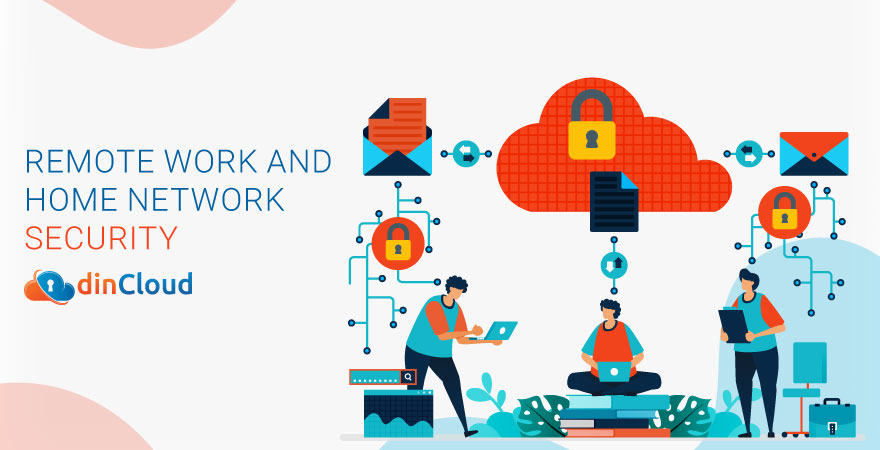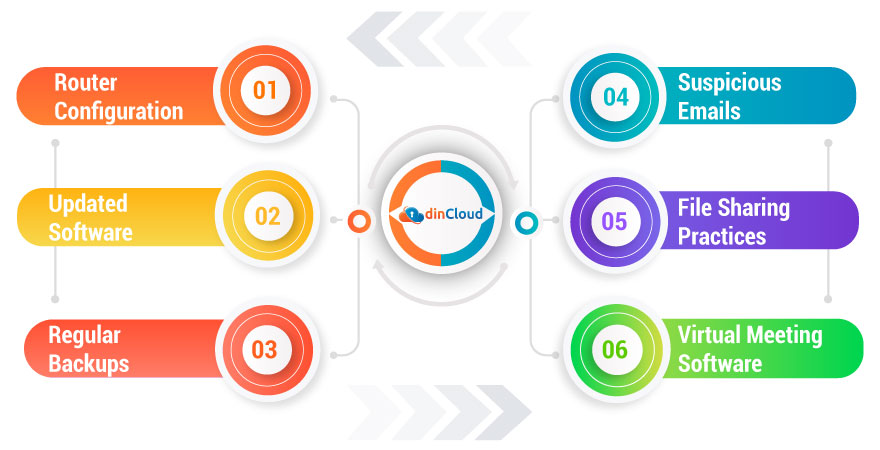At the moment, we are witnessing the largest work from home (WFH) scenario in recent history. Perhaps it may also be the largest as well as longest remote work exercise ever since technology has taken the driving seat.

With business premises shut down nearly across the globe, working from home is the only viable option for employees. This means a nearly complete reliance on personal, home networks whose security is no match for the current cyber threats.
Also Read:
- 6 Reasons that make Cloud Computing a True Lifesaver
- How Cloud Computing Can Propel IoT to New Heights?
In this post, we will discuss the factors that expose remote employees to various degrees of cyber threats. Then, we will also cover a few best practices that can go a long way in minimizing the adverse effects of such threats.
Factors that Increase Remote Work Threats
- Millions of remotely working employees are the perfect “soft target” for most cyber criminals out there.
- There may be a lot of employees who do not come from an IT background, so their understanding of network security is almost zero.
- In most cases, the protection offered by enterprise grade network security tools does not trickle down to each employee’s home network.
- Due to the casual nature of remote work, employees tend to either ignore or not follow the best security practices laid down by employers.
- The tendency to execute work related and personal tasks over the officially supplied employee devices may also leave many security gaps.
- Lastly, the inadequacy of most basic security tools when compared with enterprise grade solutions to protect against threats is also a cause for concern.
Also Read:
- Virtual Desktop Market to show Strong Growth till 2022 and Beyond
- Security Priorities for Cloud based Remote Work Environments
Limitations of Entry Level Security Tools
Whether we talk of base level security tools in general or network security solutions in particular, they are simply not equipped with the level of protection required to detect and counter present day cyber threats.
Most such security tools are quite easy to either crack or bypass altogether. Their publishers are also not proactive in rolling our regular updates. Even if that is the case, end users are negligent in keeping their security tools updated at all times.
In cyber security, network and event logging gives valuable insights about what’s happening. Entry level or personal grade security tools do not offer this functionality at all and even if it exists, it is on a very limited scale.
On the other hand, most enterprise grade network security tools offer a highly in depth access to the network. This granular level access to the network better equips network security professionals to detect, track, isolate and counter cyber threats.
Also Read:
- How to Attain Network Security in the Cloud & Beyond?
- Adoption of Cloud Security Solutions Registers a Sharp Increase
How to Improve the Security of a Home Network?
Granted we can never achieve the level of protection offered by enterprise grade cyber security solutions, we can still drastically improve the security of our home networks by adopting these simple, yet effective measures.

Router Configuration
The security of your home network begins with properly configuring your router. A trivial step such as changing the password of your router’s backend from the default password can go a long way in preventing it from being hacked.
Updated Software
This holds true for software in general and security tools in particular. Most rolled out updates cover the vulnerable aspects of security, as and when weaknesses are identified. This holds equally true for software that pertain to productivity or security.
Regular Backups
While organizations have an elaborate plan for backing up data regularly, you also need to start doing that for your important data. Ideally, there should at least be two backups that are isolated from your officially issued device and home network itself.
Suspicious Emails
This is emerging as a major problem for organizations. You need to be extra vigilant about suspicious emails that at first glance, may seem like an official communique. Avoid clicking on suspicious links embedded within emails, asking you to do certain things.
File Sharing Practices
A file that’s of routine nature to you may be a valuable intellectual property for a cyber thief. So, you must avoid sharing files over your home network when using social media platforms or insecure collaborative tools.
Virtual Meeting Software
The demand and use of virtual meeting and collaborative solutions has skyrocketed due to the present circumstances. By following the simple security guidelines issued by these software platforms, you can keep your home network and PC safe from many threats.
Conclusion
Remote work is a reality that we all will have to cope with. The regular use of our home networks is part n parcel of this new work paradigm. While we can never achieve enterprise grade protection at our homes, we can surely avoid and mitigate most threats.
If you find the security of your home network overwhelming, you can always try dinCloud’s industry leading Cloud Hosted Virtual Desktops (dinHVD). By doing so, you can forget worrying about network security and focus on productivity.
Our cloud professionals will do all the security related heavy lifting for you, so that you can focus on the things that matter most. Contact Us if you have any questions about our secure cloud solutions and we will be glad to lend a hand.


